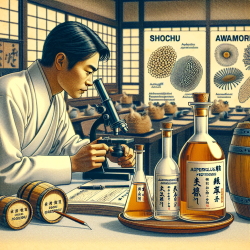Introduction
In the ever-evolving field of speech-language pathology, staying abreast of the latest scientific advancements is crucial. A recent study titled Colorimetric Assay Reports on Acyl Carrier Protein Interactions sheds light on a novel method that could revolutionize our understanding of protein interactions, with potential implications for therapeutic interventions.
The Power of Colorimetric Assays
Colorimetric assays have emerged as a powerful tool in biochemical research. This study introduces a colorimetric assay that provides a visual and quantitative measure of acyl carrier protein (ACP) interactions. By converting the terminal thiol of the E. coli ACP to a mixed disulfide with 2-nitro-5-thiobenzoate ion (TNB?), researchers can now visualize and quantify ACP interactions with a cognate ketoacyl synthase (KS) through a simple color change.
Implications for Speech-Language Pathology
While this research is rooted in biochemistry, its implications extend to fields like speech-language pathology. Understanding protein interactions at a molecular level can enhance our knowledge of neurological processes and disorders. This knowledge can inform therapeutic strategies, especially in cases where metabolic pathways are implicated in speech and language disorders.
Encouraging Further Research
The study's findings encourage practitioners to explore the potential of colorimetric assays in their research. By integrating these assays into their work, speech-language pathologists can gain deeper insights into the biochemical underpinnings of speech and language disorders. This approach aligns with data-driven decision-making, ensuring that interventions are grounded in scientific evidence.
Practical Applications
- High-Throughput Screening: The colorimetric assay allows for rapid screening of protein interactions, which can be applied to identify potential therapeutic targets.
- Drug Discovery: By enabling the identification of small molecule inhibitors of ACP-KS interactions, this method could facilitate the discovery of new drugs that impact neurological pathways.
- Educational Tool: The visual nature of the assay makes it an excellent educational tool for teaching students about protein interactions and their significance in biological processes.
Conclusion
The introduction of a colorimetric assay for ACP interactions represents a significant advancement in biochemical research. For speech-language pathologists, it offers a new avenue for exploring the biochemical basis of communication disorders. By embracing this innovative approach, practitioners can enhance their research and ultimately improve outcomes for children.
To read the original research paper, please follow this link: Colorimetric Assay Reports on Acyl Carrier Protein Interactions.










